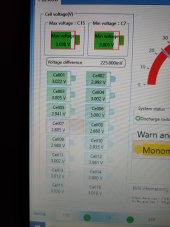Steve_Rutland
New Member
- Joined
- Dec 4, 2022
- Messages
- 28
Well I’ve changed the wiring around, tried it on the 485 too and nothing works. Useless piece of chinese rubbish!! May as well leave it on lead acid as it functions fairly well on that.
Thanks for trying.
Thanks for trying.
Last edited:





